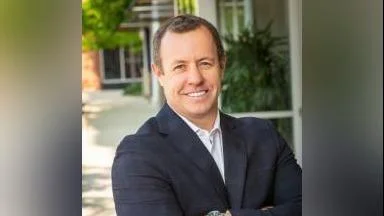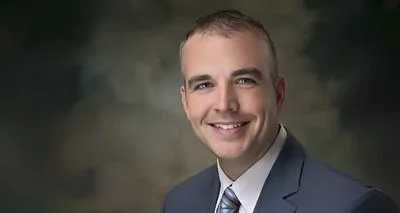Paul Taylor OCH Chief Executive Officer | Official Website
Paul Taylor OCH Chief Executive Officer | Official Website
Many parents wonder if their child's speech and language development is on track. Understanding common milestones can help families know when to seek support, according to Kara Slater, a pediatric speech therapist at Ozarks Community Hospital (OCH).
During a discussion with OCH, Slater outlined typical speech and language development stages and signs that may indicate a child could benefit from additional support.
In the first year, babies start communicating through cooing, babbling, and gestures such as waving or pointing. By their first birthday, some may say simple words like “mama” or “bye-bye.” Slater explained, “First words don’t have to sound perfect, what matters most is that they’re used consistently and meaningfully.”
Parents should be aware of potential concerns such as a lack of cooing or babbling, not responding to names or sounds by 6–9 months, or few smiles and gestures.
Between 12 and 24 months, vocabulary increases quickly. By age two, many children use about 50 words and combine them into short phrases. They can also follow simple directions and identify familiar objects. To encourage language development, Slater recommends narrating daily routines, expanding on what children say, reading together, following the child’s interests, repeating new words in different contexts, and using songs and rhymes.
Red flags during this stage include no first words by 15–18 months, fewer than 50 words or no two-word combinations by age two, difficulty following simple directions, or frequent frustration when trying to communicate.
From ages two to five, children’s speech becomes clearer and more complex. At two to three years old, sentences grow to three or four words and speech becomes easier to understand. By ages three to four, vocabulary grows rapidly and children can tell short stories. By four to five, speech is clear and expressive, with full sentences and understanding of basic grammar.
Concerns for this age group include speech that is hard to understand by age four, frequent sound errors, difficulty forming sentences or telling stories, and limited understanding of directions.
For school-age children (five years and older), Slater notes that strong communication skills are important for classroom success. “Language helps with following directions, reading, writing, expressing ideas, and social interaction. When speech or language difficulties persist, children may struggle with participation or confidence.”
Signs to watch for in school-age children include trouble learning new vocabulary, ongoing articulation errors, difficulty retelling stories, or anxiety about speaking tasks.
Slater emphasizes the importance of early support: “When we identify and address communication challenges early, we’re not just building words—we’re building confidence, relationships, and a child’s future.”
Early intervention can make it easier for children to strengthen their communication skills and succeed in school. Parents who have concerns about their child’s progress are encouraged to consult their primary care provider. After an evaluation, a referral to a specialist like Slater may be recommended.
More information about OCH’s speech language program and scheduling appointments is available at www.ochonline.com.





 Alerts Sign-up
Alerts Sign-up